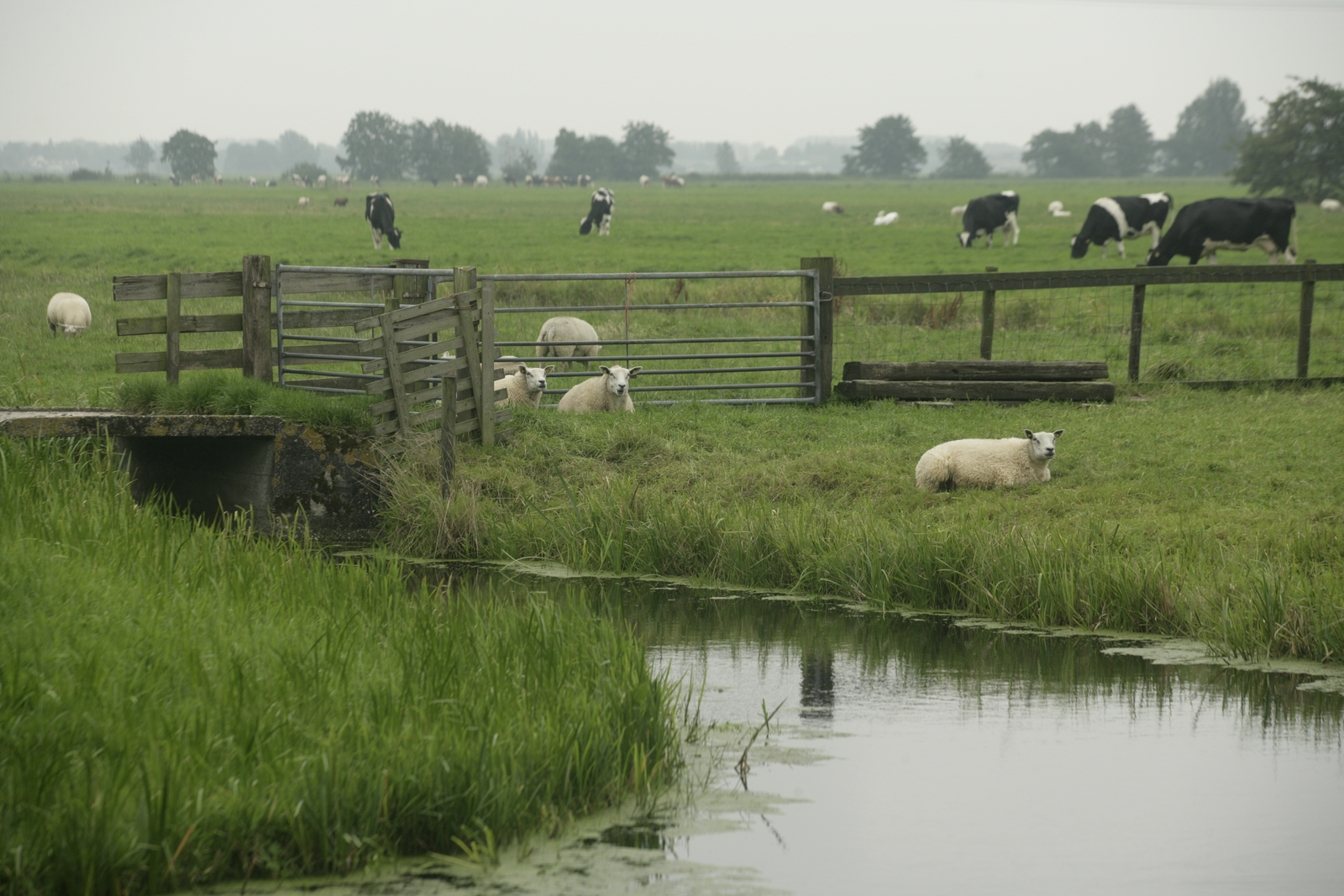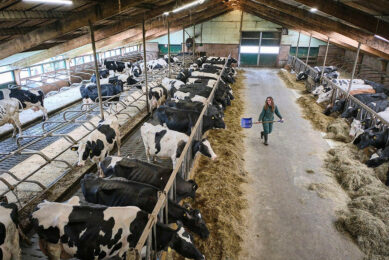Mixed grazing of cattle and sheep

Mixed grazing of cattle and sheep is a system which has long been utilised in parts of the world. But what are the benefits, mechanisms, and factors of mixed grazing under different farming conditions?
In mixed grazing, cattle and sheep may either graze together at the same pasture during one grazing season, or alternate in the use of a pasture on an annual basis. The choice of the system to be used depends largely on the facilities that satisfy two different needs at once. Other factors, such as feed requirements and pasture productivity may also determine the choice of either system. When facilities appropriate for both species are available, the grazing of cattle and sheep simultaneously may be used. The system is particularly useful when there are parasite risks in high concentration per unit of land of young susceptible animals which are totally dependent on pasture for their nutrient intake. Mixed stocking in circumstances of this kind could lead to a higher total production per unit area by using two kinds of animals each at less than its critical stocking rate.
The system is also useful in cases where herbage, in times of surplus, becomes excessively mature for sheep but continues to be eaten by larger ruminants. Alternation of pasture use between cattle and sheep is another method of mixed grazing related mainly to the difficulty of satisfying needs of different species at once. This system should highly depend on feed requirements of different classes of stock. If one class contains animals with low order of requirements or where requirements are not critical, such alternation can be used to benefit the other class. That is, the system may be adjusted in such a way that the lower demand class is further behind the higher demand class, and that the higher demand class is closer behind the lower. Such an approach tends to lead towards specialisation of an enterprise and can certainly offer benefits such as controlling parasitism, with agronomic advantages similar to those for simultaneous grazing.
Pasture growth and animal production
In comparison, between mixed and single-species grazing, it is important to consider the relative effects on pasture productivity, intake, and nutritive value which, in turn, may affect both individual animal performance and output per unit area. In early studies, to compare chemical and physical characteristics of urine voided on pasture by cattle and sheep, there was a greater loss of nitrogen in cattle urine (50%), compared to sheep urine (12-26%), as measured by the increased level of ammonia in the soil surface and the higher soil pH. It was suggested that the overall losses of nitrogen would be less under mixed grazing than under grazing of cattle alone. Furthermore, the greater ability of the mixed urine to adhere to plant leaves allows the urine nutrients to be absorbed directly through the leaves in the absence of rain.
Pasture growth in this case would be improved by mixed grazing through the improved nutrition of pasture plants. Under mixed grazing, sheep consume the high grass around the cattle dung pats, which cattle refuse to eat. The same was true when the two species grazed on alternate basis. As cattle refuse to graze the grass around their dung, the grass grows high around these spots, which can lead to reduced quality of the soil. Sheep could then be introduced to the extent that they would consume this high grass without affecting cattle performance. The preferential consumption of the high grass herbage by sheep could, therefore, be expected to reduce the wastage of herbage by preventing the dieback. It also allows the higher nutrients concentrated in this grass to be recycled into the pasture through sheep faeces and urine, thus improving vegetation and growth of pastures compared to the cattle only situation.
Soil conditions
In a study on the effect of cattle and sheep grazing on production of pastures containing mixtures of ryegrass, clover, and cocksfoot, total dry matter (kg/ hectare/ year) was 9.728 and 12.447 for cattle and sheep, respectively. The markedly decreased production of cattle pasture relative to sheep pasture was primarily a function of a heavier trampling by cattle. The more compacted topsoil under cattle grazing can be expected to dry out more rapidly than less compacted topsoil. The resulting drier soil conditions are likely to adversely affect nutrient absorption and hence reduce pasture production. In addition, the greater loss of tiller population found under cattle than under sheep grazing was reflected in decreased rates of herbage growth and net production on cattle grazed swards than on sheep grazed swards. It may be concluded that the dilution of cattle pastures with sheep would likely minimise the trampling effect and increase tiller population and, hence, improve herbage production. The increased herbage growth and production through mixed grazing by any of the above mechanisms is often associated with an increased intake per animal, unless the effect is cancelled out by a comparable increase in stocking rate. However, even if herbage growth is not affected, mixed grazing may result in an increase in intake per individual if the diets of particular species do not overlap completely, so that on balance competition between individuals of the same species is less when different species graze together than when grazing separately.
Heavier sheep
With regards to animal production from mixed grazing, it was reported that weight gain of sheep per hectare was 10.2 kg when grazed with cattle as compared to only 6.9 kg when grazed alone. Wool production per head per hectare was 3.1 kg and 2.9 kg for mixed and single grazing, respectively. In other studies, rate of gain of sheep grazing simultaneously with cattle was twice that when grazed alone. It was also reported that the mixed grazing lambs had a dressing-out percentage of 2.2 units better than the single grazing lambs. Also, the fur skin of the mixed grazing lambs on average had higher scores and was better paid than those from single grazing. The reproductive performance of sheep, measured as percentage lamb crop, was also higher when sheep were grazed with cattle than when grazed as a single species. The increased production of sheep over cattle from mixed grazing was attributed to a variety of mechanisms. First, is the more successful competition of sheep with cattle than among themselves. The greater ability of sheep to harvest pasture at germination and to remove forages closer to the ground would certainly lead to better utilisation of pasture by sheep than by cattle. This is particularly true when a higher ratio of sheep-to-cattle on pasture is used. A study was conducted to compare performance of cattle and sheep grazing together in different ratios and stocking rates (Table 1).
Sheep performance was less sensitive to the stocking rate and exhibited growth rate advantage at any ratio. Cattle performance was not markedly affected when a lower number of cattle was involved. Competition between cattle and sheep may be reduced on pastures containing a variety of forage species, including shrubs or trees, which could be eaten by cattle and not by sheep. Second, the one-way advantage occurring from cattle to sheep is also a factor allowing the increased performance of sheep over cattle under mixed grazing.
Control of gastrointestinal parasites
In most grazing conditions, gastrointestinal parasitism may develop through the establishment of a physiological association between the parasites and their host animals. Medication regimens with anthelmintics have been widely used for rescuing parasite burdens and, hence, improving animal health and performance. However, most anthelmintics are rapidly metabolised and excreted by the treated animals. Therefore, animals soon become re-infected from contaminated pastures, unless the dosing regime is so frequent as to be uneconomic. This is particularly true in cases such as grazing of young susceptible animals in high stocking rates, or in rainy seasons when pastures are wet, favouring the rapid development of parasite eggs to infective larvae. When adopting mixed grazing, the stocking rate for each species is lower, thus reducing the overall degree of contamination. A study was conducted to compare the number of different species of gastrointestinal parasites found in two groups of sheep exposed to either cattle parasites (group A) or to sheep parasites (group B). Results are shown in Table 2. It is obvious that sheep exposed to cattle parasites developed a resistance against their parasite species. Such a resistance was also found in cattle, but to a less extent, as a result of intake of larvae from ovine origin.
Other advantages of mixed grazing
It is possible that mixed grazing may help control losses to livestock, which occur in nature and are unlikely to be prevented by other means. Toxic plants are another reason for losses of livestock, particularly in mountain regions where soils are deep and well-drained, favouring the canopy development of such plants. The improved forage production from mixed grazing would discourage the use of toxic plants by animals. That is, animals would tend to eat forages and leave out the less palatable toxic plants. From the standpoint of economics, mixed grazing improves income stability due to the marketing of multiple products. Timing of sales to improve cash flow is important and more easily accomplished with the multiple production.
References are available upon request.











